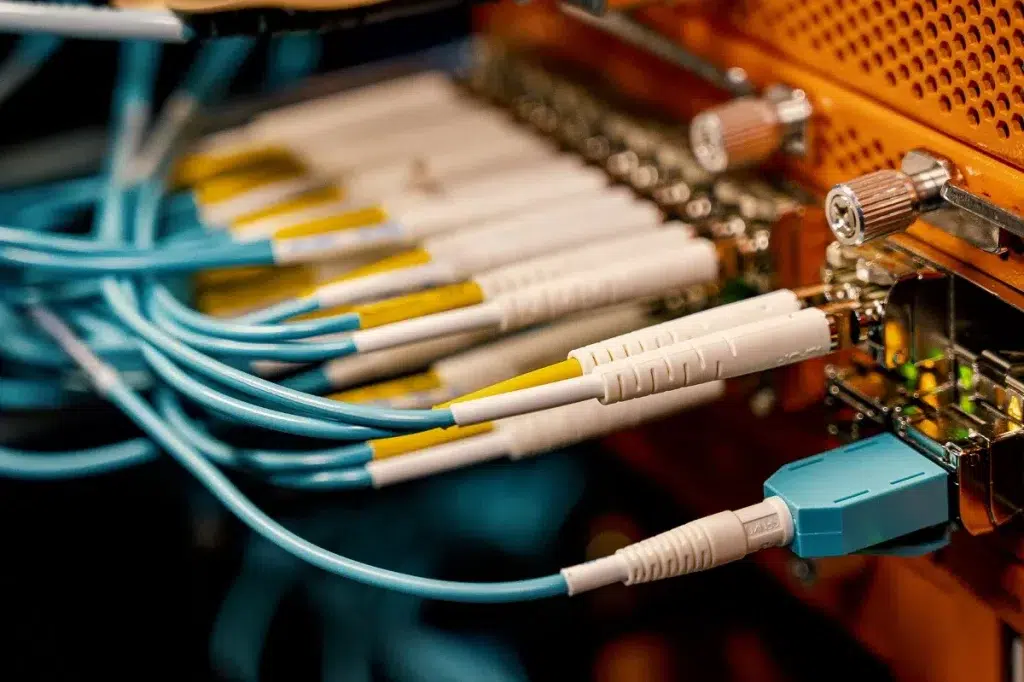Today I am going to discuss cross connects, sometimes known as “X-Connects”. These connections link different backbone providers or other telecom providers to one another inside of a Colocation data center facility. In the world of data centers, cross connects are more than just a technical necessity — they’re an important ‘revenue generator’ for Internet Service Providers (ISPs). Since they are simple cable runs, these monthly charges are almost pure profit for the data center. Cross connects refer to the physical cabling that links different networks within a data center, allowing them to communicate directly with one another. This functionality is essential for businesses that rely on low-latency and high-speed data transfer.
Types of Cross Connects
There are primarily two types of cross connects:
1. Copper Cross Connects: These are traditional copper cables used to connect servers, switches, or other networking equipment. They are often employed for shorter distances within a data center due to their lower cost.
2. Fiber Optic Cross Connects: Fiber optic connections offer higher bandwidth and longer distances without signal degradation. These are increasingly popular as businesses demand faster data transfer speeds and more reliable connections.
Each type of cross connect comes with its own pricing models, which can vary significantly between data centers.
Revenue Generation and Pricing Models
Data centers typically charge monthly fees for cross connects, which can range from a modest fee to several hundred dollars depending on factors such as the type of connection, distance, and the providers involved. This consistent revenue stream is a major cash cow for ISPs, contributing to their overall profitability.
Interestingly, some data centers have minimum cross connect purchase requirements. For example, a “3 pack” might force clients to buy three connections at a minimum of $500 to $600 per month. This strategy can be frustrating for smaller businesses or those with specific connectivity needs. In contrast, providers like Metanet have no such requirements, allowing customers to purchase only what they need, which can be a significant advantage for companies looking to manage costs effectively.
The Time Factor
One significant consideration when setting up a cross connect is the time it takes to implement. Typically, providers can take up to two weeks to run a cross connect from the data center to the customer’s patch panel. This delay can be frustrating for businesses that need immediate connectivity, especially in today’s fast-paced digital landscape.
Prewired Solutions: The Metanet Advantage
A standout in the data center industry is Metanet, a provider that has embraced efficiency by prewiring all their cross connects. This innovative approach means that the necessary cabling is already installed and ready to go. When a customer requests a cross connect, the process can be completed in as little as 24 to 48 hours, a stark contrast to the standard two-week timeline.
This capability not only enhances customer satisfaction but also positions Metanet as a competitive player in the market. By reducing the time and complexity involved in establishing cross connects, Metanet streamlines the customer experience, allowing businesses to focus on their core operations rather than connectivity challenges.
Conclusion
Cross connects are an integral part of data center infrastructure, serving as a critical bridge for data transmission. As a key revenue source for ISPs, understanding the different types of cross connects and their associated costs is essential for businesses seeking optimal connectivity solutions. While some data centers impose minimum purchase requirements and traditional setups can involve delays and fees, companies like Metanet are leading the way with flexible, prewired solutions. As the demand for rapid and reliable data services continues to rise, the importance of efficient cross connects will only grow.


